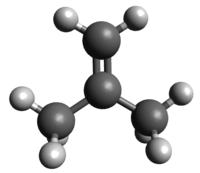|
The molecule possesses two equivalent methyl rotors
whose internal rotation splitting was resolved (in part)
in the laboratory. An extensive account on its rotational
spectrum was given by
(1) M. Fatima, H. S. P. Müller, O. Zingsheim, F. Lewen,
V. M. Rivilla, I. Jiménez-Serra, J. Martín-Pintado,
and S. Schlemmer,
2023, Astron. Astrophys. 680, Art. No. A25.
Additional transition frequencies up to 35 GHz were
taken from
(2) V. W. Laurie,
1961, J. Chem. Phys. 34, 1516;
from
(3) J. Demaison and H. D. Rudolph,
1975, J. Mol. Struct. 24, 325.
and from
(4) H. S. Gutowski and T. C. Germann,
1991, J. Mol. Spectrosc. 147, 91.
The internal rotation leads to four different internal
rotor components which may be labeled as
A1A1, EE, A1E, and
EA1. The respective reduced spin-statistical
weights are
9 : 16 : 5 : 4
for levels with Ka + Ka
being even and
7 : 16 : 3 : 4
for levels with
Ka + Kc being odd.
Please do note, however, that there is a known bug in erham
which recalculates Kc incorrectly under
certain circumstances. The spin-statistical weights are
correct for the corresponding transition, Kc
may need to be adjusted!
Please note also that erham uses two σ values to label
each symmetry component. This is incompatible with the VAMDC-CDMS
requirements and does not agree with the convention of the
classical CDMS to use one state number to label
one symmetry species (or one vibrational state etc.).
The following relations exist:
0 / 0 0 / A1A1,
1 / 0 1 / EE,
2 / 1 1 / A1E,
3 / 1 2 / EA1.
Please note also that the partition function refers to
the ground vibrational state.
Vibrational correction factors for a posteriori corrections
were derived in (1) in the harmonic approximation.
The calculation should be sufficient for observational purposes.
Frequencies with calculated uncertainties exceeding
0.2 MHz should be viewed with substantial caution.
The dipole moment was determined in (2).
|
